On going projects
Project on rare-earth elements 01Development and research for improving
the performance of rare-earth-based superconducting wires
Group members
- Principal InvestigatorAssoc. Professor Shintetsu Kanazawa
- Professor Chihiro Sekine
- Professor Hideki Kawaguchi
Abstract
We developed a multi-core type of rare-earth-based high-temperature superconducting REBa2Cu3O7 (RE123, RE: rare earth element)-coated conductors, having a high critical current with "zero" electrical resistance, in order to save power and to improve efficiency in high-current equipment and high-field electromagnets. The recent commercially available RE123 coated-conductors are a single-core structure, and irregular magnetic field and AC loss occur in magnets, due to large shielding current from the single-core. With multi-core structure, the shielding current can be greatly improved, and if the critical current of the coated conductor can be maintained, there are high expectations for practical use.
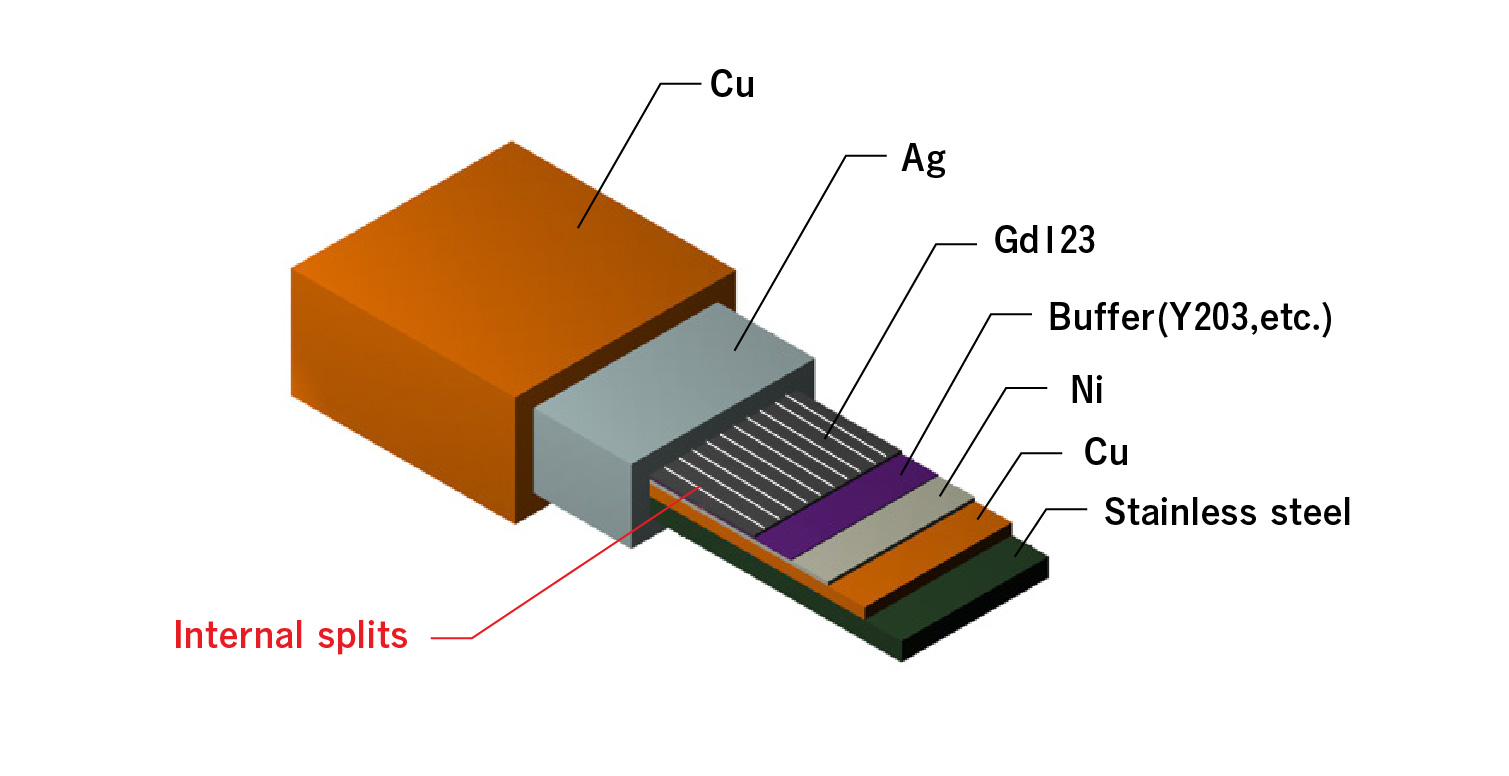
Project on rare-earth elements 02Stabilities and Hydrogen Storage
Capacities of Face-Centered Cubic Rare-Erath Hydrides
- #Hydride
- #hydrogen storage alloy
- #high pressure synthesis
- #rare-earth element
Group members
- Principal InvestigatorProfessor Atsunori Kamegawa
- Burapornpong Siree
- Assoc. Professor Yasuteru, Mawatari
Abstract
Construction of a hydrogen supply chain is one of the important key technologies for the realization of Carbon neutrality. In order to safe- and secure- utilize hydrogen, it is important to establish a technology for delivering "Last One-Mile” hydrogen at low pressure and compactly. Hydrogen storage alloys are a promising candidate technology to overcome the problem. Conventional alloys expand and contract by about 40% when the alloys absorb and release hydrogen. In order to improve the efficiency of a hydrogen storage tank, it is desired to reduce the volume change.
Rare earth elements (RE) often form dihydride REH2 and trihydride REH3. The volume change of the hydrides when transformed maintaining face-centered cubic structure (FCC) is as small as 10%. We found that rare earth hydrides are stabilized in the FCC structure by element addition and microstructural evolutions. The purpose of this study is to determine the stabilization mechanism and evaluate them as hydrogen storage alloys.
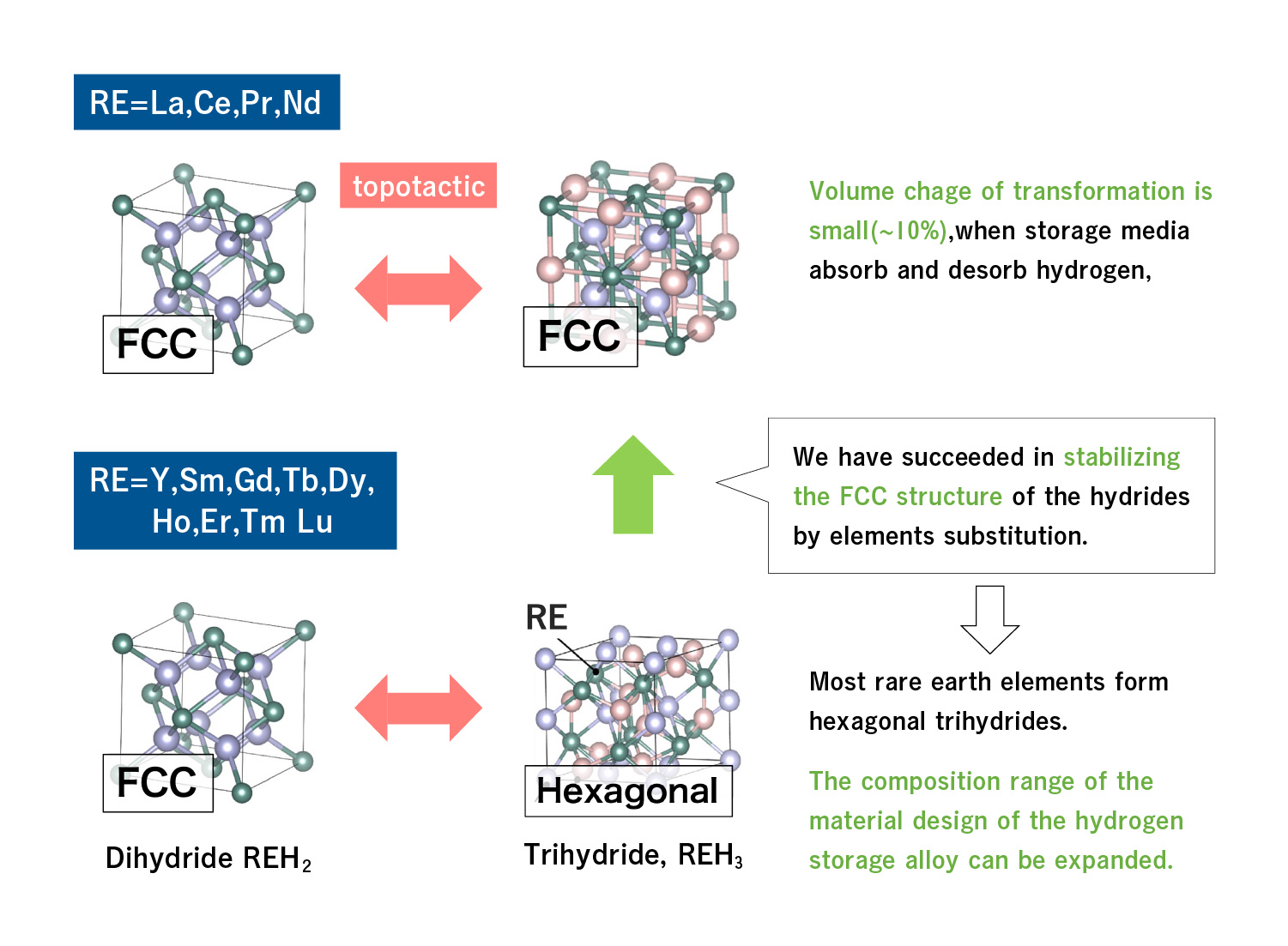
Project on rare-earth elements 03Synthesis and application of rare earth organic hybrid molecules
with unique temperature phase transitions
- #Smart window
- #Lower critical solution temperature (LCST)
Group members
Abstract
About 40% of the energy consumed in a building has been spent on air conditioning, cooling, and heating. Comprehensive control of energy transfer through windowpanes is one of the major challenges in terms of efficient use of energy because windows are the main pathway for heat dissipation in winter and excessive heating in summer. The development of technology to increase the energy efficiency of windows in residential and commercial buildings without jeopardizing the comfort, health, and safety of residents is urgent on a global scale including not only in Hokkaido but also in tropical regions, where energy consumption are high.
A smart window (SW) that can adjust the transparency and reflectance as needed can solve this issue easily and efficiently.
In this study, we aim to design and synthesize rare earth organic hybrid materials that exhibit phase change behavior with temperature and to apply it to thermochromic SW. The main purpose of this study is to clarify the control of phase-transition temperature (LCST) and its mechanism.
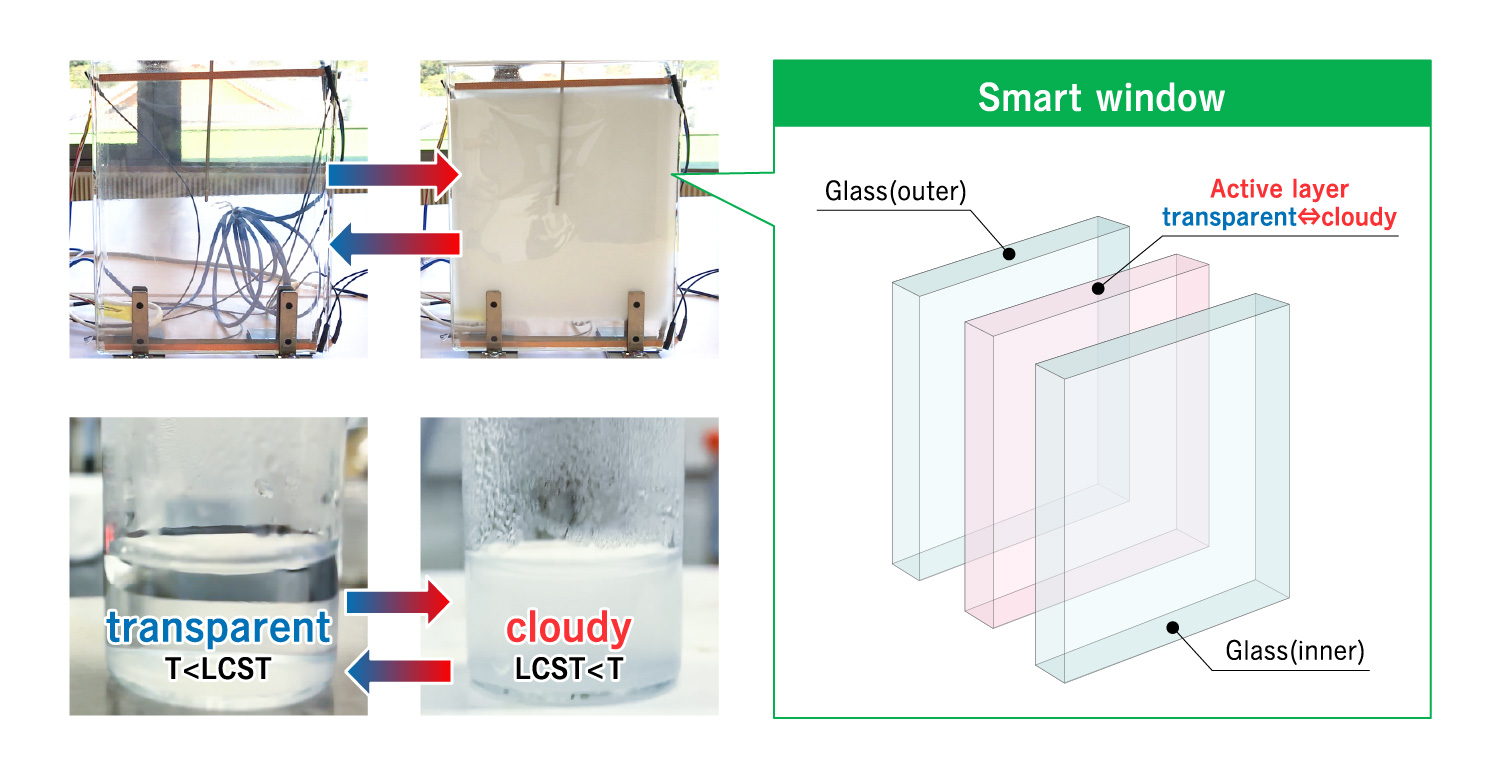
Project on rare-earth elements 04Development of high-performance thermoelectric materials
using first-principles calculations
and classical molecular dynamics simulations
- #thermoelectric material
- #rare-earth filled skutterudite
- #high-temperature and high-pressure synthesis method
- #first principle calculation method
- #rattling effect
Group members
- Principal InvestigatorAssoc. Professor Keiki Takeda
- Professor Chihiro Sekine
- Assoc. Professor Naoya Sawaguchi
Abstract
Thermoelectric power generation, which can generate electricity in any temperature range as long as there is a temperature difference, is a promising renewable energy source along with photovoltaic power generation and wind power generation. However, further performance improvement of thermoelectric materials is necessary to widely spread thermoelectric power generation. Using computer simulation based on classical molecular dynamics and the first principle calculation method, a new material applicable to thermoelectric conversion module would be searched, and the development of high-efficient thermoelectric material in the next generation would be studied. Specifically, we would develop high-performance thermoelectric materials by focusing on cage-like materials such as rare-earth filled skutterudite compounds, which are expected to have the rattling effect. In the cage-like compounds, the guest ions enclosed within the cage weakly couple with cage-forming ions, generating low energy optical phonons that interfere with thermal conduction by harmonic phonons, which can significantly reduce lattice thermal conductivity. The use of this rattling effect can be used to reduce the thermal conductivity regardless of the optimization of the carrier concentration, and is expected to dramatically improve performance. Since filled skutterudite compounds require a reaction between elements with high vapor pressure and transition metals with high melting points, samples would be synthesized using a high-temperature and high-pressure synthesis method.
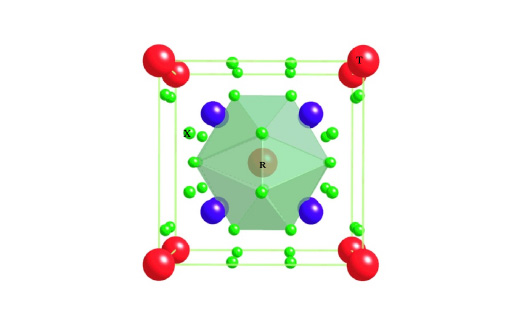
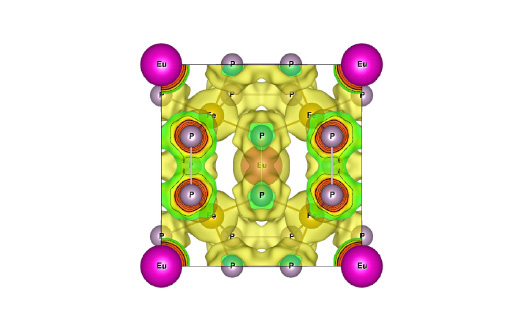
Project on rare-earth elements 05Creation of various SDGs glass crafts made from automobile waste glass
- #Upcycling
- #Automobile waste glass
- #Hand-craft glassware
- #Otaru
- #Rare earths
Group members
- Principal InvestigatorAssoc. Professor Toshihiro Kuzuya
- Assoc. Professor Naoya Sawaguchi
- Professor Chihiro Sekine
Abstract
The amount of automobile waste glass attains about 150k tons per year in Japan. They have components close to soils and do not contain valuable and harmful elements. Most of them are currently landfilled, and a part of them is only used as a raw material of glass wool and roadbed materials. Recently, the lateral recycling of automobile waste glass has been proposed. However, since there is no such industrial base in the Hokkaido area, it has a disadvantage in the Hokkaido area from transportation costs.
In this study, we propose the upcycling route of automobile waste glasses. We focused on hand-craft glassware of the Otaru area, which have high additive values and will be stored for a long time. In this research, (1) we aim to color from cold to warm colors by controlling the valence of Fe ions in the waste glasses. (2) By adding a network modifier to the waste glasses, the physical and thermomechanical properties are adjusted to improve the energy efficiency and workability in the manufacturing process. (3) We aim to add an antibacterial and photocatalytic property to recycled glassware by utilizing cerium, an additive of automobile glasses. Ultimately, we would like to create a novel hand-craft glassware considering SDGs.
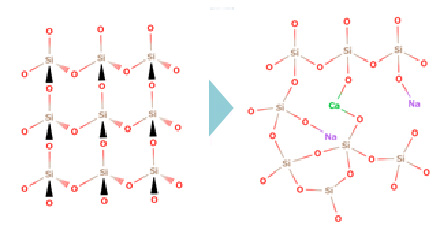
・Improvement of work effciency
・Reduction of greenhouse gas

・Fabrication process of RE oxide NPs modified glass.
・creation of novel hand-craft glassware considering SDGs.
・Addition of an antibacterial and photocatalytic property to recycled glassware.